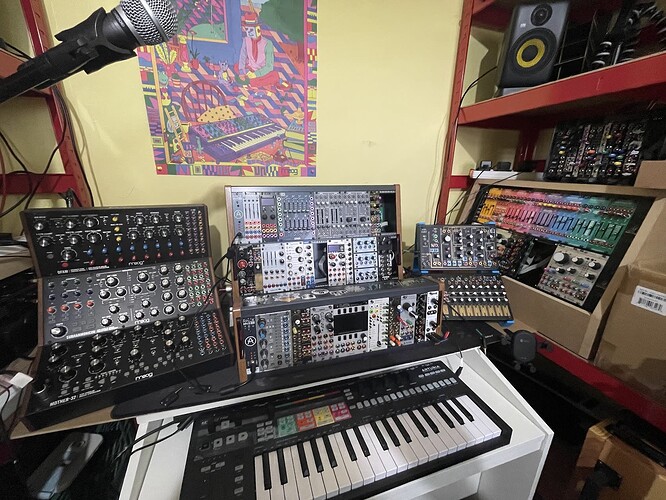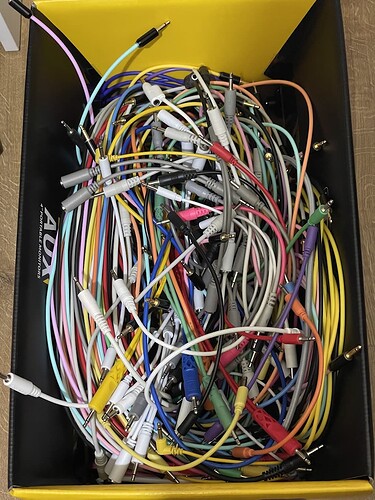So I’ve finally decided to get a real rack and I’m looking for advice on a couple of areas. I will be making drone/dark ambient and I already have a digitakt, 0-Coast and NTS-1. I want the rack to create slowly evolving drones and textures which I can layer with the 0-Coast for fx/bass and the digitakt to play more textures, glitchy fx, or whatever sounds right. I also plan to use VCV for CV modulation and sent to midi which seems to be nice and easy with the Nifty case.
So far I have decided to get the Nifty case and Morphagene, along with FX Aid XL for big reverbs and probably Befaco Out v3. The areas I am undecided about are modulation, distortion, and perhaps utilities.
For modulation, I would like a few different LFOs that I can use with both the rack and with the 0-Coast. I’ve been thinking about Ochd + some kind of mixer because I love it in VCV and it seems hard to beat in terms of separate LFOs and footprint. But then, perhaps Maths might be better? I would get less choice of outputs from it vs Ochd but I could potentially do more with it?
For distortion, I really have no idea. I want it to be stereo in/out as I plan to use it before or after FX Aid but I don’t know what kind of distortion I need for creating filthy distorted pads/drones. I quite like Debriatus’ saturate and fold sections in VCV. I’ve been looking at Erica Synths Pico DSP since it is small, stereo and could be useful to have other fx when I don’t want distortion. I think I also want it to have some kind of tone/filter to tame it and make it dark.
For utilities, I don’t think I need a great deal, at least for this iteration of the rack. It looks like I can attenuate the inputs on Morphagene and I don’t really need to create envelopes for now, nor do I need sample and hold (although this might be handy later on).
So any advice on modules? I’m also thinking that a stereo mixer with a few different inputs might be useful so that I can route the digitakt (which will have the 0-Coast running through it) because I only really have a stereo output to my speakers/computer.


